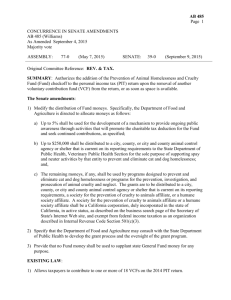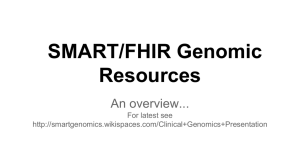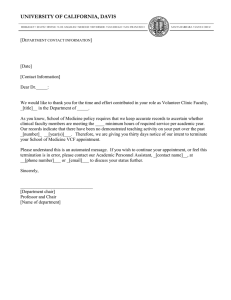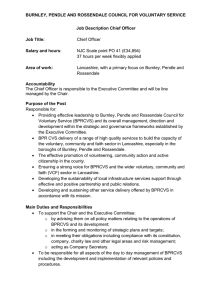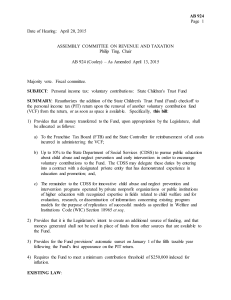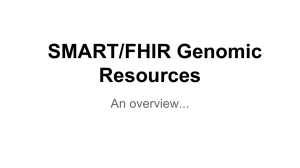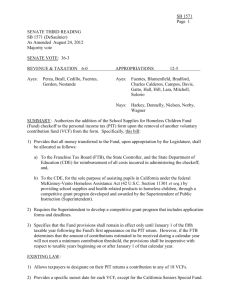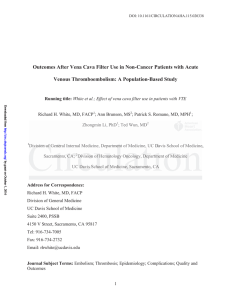ESD.10 Introduction to Technology and Policy
advertisement
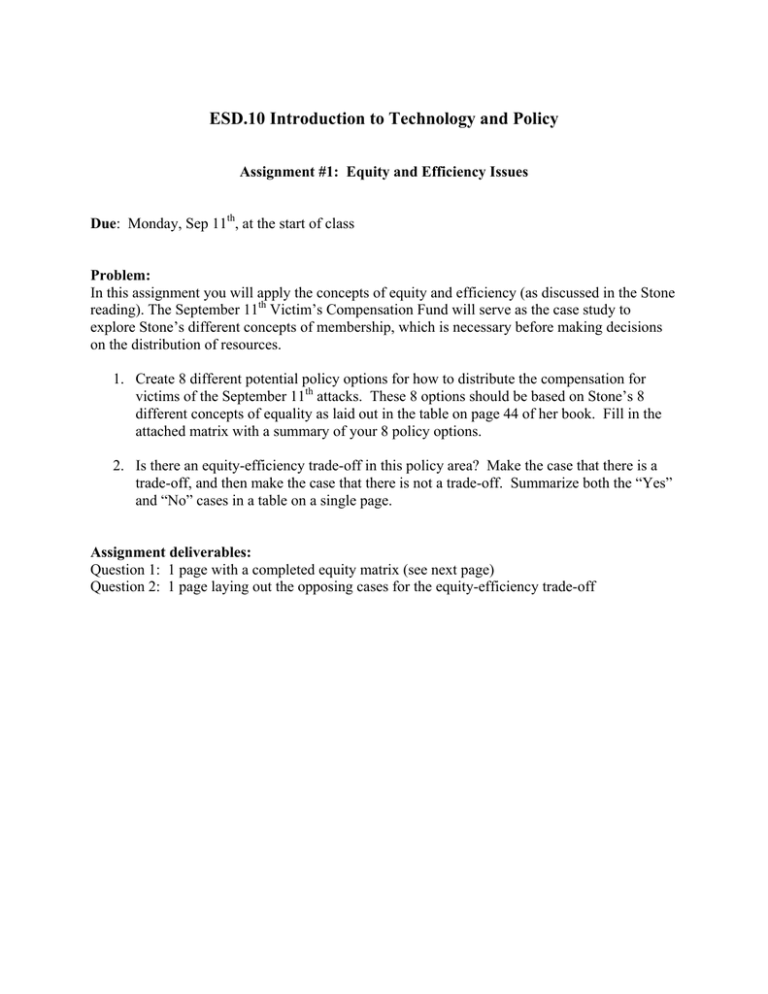
ESD.10 Introduction to Technology and Policy Assignment #1: Equity and Efficiency Issues Due: Monday, Sep 11th, at the start of class Problem: In this assignment you will apply the concepts of equity and efficiency (as discussed in the Stone reading). The September 11th Victim’s Compensation Fund will serve as the case study to explore Stone’s different concepts of membership, which is necessary before making decisions on the distribution of resources. 1. Create 8 different potential policy options for how to distribute the compensation for victims of the September 11th attacks. These 8 options should be based on Stone’s 8 different concepts of equality as laid out in the table on page 44 of her book. Fill in the attached matrix with a summary of your 8 policy options. 2. Is there an equity-efficiency trade-off in this policy area? Make the case that there is a trade-off, and then make the case that there is not a trade-off. Summarize both the “Yes” and “No” cases in a table on a single page. Assignment deliverables: Question 1: 1 page with a completed equity matrix (see next page) Question 2: 1 page laying out the opposing cases for the equity-efficiency trade-off Equity Matrix for Question #1 – September 11th Victim’s Compensation Fund Your name: _______________________________________________ Dimension Issue Your Policy Option Recipients Membership Any victim of the Sept. 11 attacks (or their surviving spouse) is given an equal share of the VCF. Rank-based distribution Distribute the VCF in amounts proportional to the type of injury suffered from the attacks. Surviving spouses are given the highest amount, followed by quadriplegics, then paraplegics, then amputees, and so on. Group-based distribution Divide the VCF into two equal amounts, one for surviving female victims and one for surviving male victims. Because men are more likely to be breadwinners and thus to have been injured in the workplace attacks, there are fewer members of the female group and they are thus given larger individual amounts of the VCF--compensating for their historical earnings disadvantage. Items Boundaries of the item Distribute the VCF so as to ensure that every victim receives an equal total compensation from all sources including insurance, charities, gifts, etc. Value of the item Use a sliding scale to distribute larger amounts of compensation to poorer victims, who will value the benefits much more than the affluent. Process Competition Invite all victims and surviving spouses to the field at Yankee Stadium. Drop the total amount of the VCF in $100 bills from a helicopter and allow everyone the chance to collect as much as possible. Lottery Give every victim and surviving spouse one ticket for a random lottery that determines who receives the entire amount of the VCF. Voting Treat every victim and surviving spouse as a candidate for compensation. Allow the candidates to campaign in the public arena and state their case for compensation. Hold a nation-wide vote and then award the VCF in amounts proportional to each candidate’s (victim) share of the vote. Question #2: Is there an Equity-Efficiency Tradeoff with respect to the Sept. 11 Victim’s Compensation Fund (VCF)? Yes No By limiting the liability of air carriers for injuries to third parties caused during the Sept. 11 terrorist attacks, the VCF reduces incentives for air carriers and other companies to innovate and adopt counterterrorism technologies and protocols. If lawsuits were allowed to proceed unfettered against air carriers for injuries caused on Sept. 11, the resulting awards might be so large as to cripple the air transport sector. Liability limits actually provide the necessary financial security for air carriers to maintain operations and improve counter-terrorism efforts. The VCF transfers payments from taxpayers to terrorism victims, not from the parties that caused injuries (terrorists, negligent security screeners, defective radio manufacturers, etc.) to the victims. This exchange is more efficient than determining fault through lawsuits but is not as fair. The taxpaying public has never questioned the fairness of the VCF on these grounds. Society accepts the premise that a publiclyfunded VCF demonstrates an “unprecedented expression of compassion,” a worthwhile and desirable characteristic. The bureaucracy required to administrate the VCF cost the government $87 million, including a $77 million payment to PriceWaterhouseCoopers. It is wasteful to divert funds to a third party administrator that could be used for victims’ payments. Administration is a productive activity in itself. The $87 million fee represents valuable input for accounting firms and creates jobs, pays salaries, etc. The terms of the VCF stipulates that victims cannot work if they file claims, reducing productivity. Claims filing is also prohibited for undocumented aliens, unmarried life partners, and victims who did not seek medical help before Sept. 12, reducing equity. The VCF increases productivity and equity by providing a streamlined process for Sept. 11 victims to quickly receive much needed financial assistance and put their lives back together in the wake of tragedy. The VCF sidesteps the civil justice system in the name of efficiency but thus denies citizens their rights to a major pillar of American democracy. The means of the VCF might vary from civil litigation but the ends are the same: financial benefits are awarded in just amounts to victims. The VCF only speeds up the process. Distributing money discourages survivors to work, lowering economic efficiency. Distributing money helps survivors gain financial security, necessary for them to be productive members of an efficient economy.
